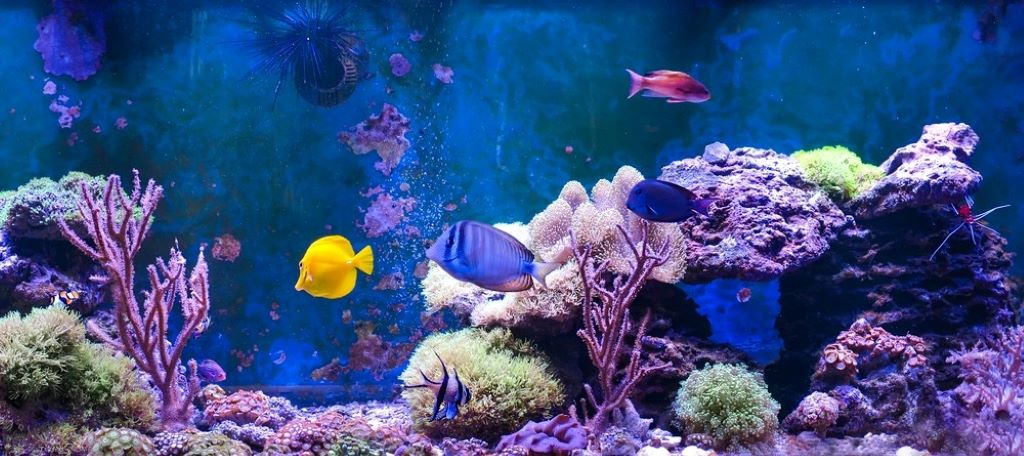The vibrant, bustling world of a reef aquarium is a captivating sight. But behind the beauty lies a responsibility to ensure the elements within are sourced sustainably. With growing concerns about the environmental impact of the aquarium trade, the sourcing of reef aquarium decoration has become more critical than ever. Let’s explore the depths of this issue, examining the pros and cons of various options, reviewing popular choices, and answering frequently asked questions.
The Importance of Sustainable Sourcing
Traditional methods of collecting aquarium decorations, particularly live rock and coral, often involve destructive practices like cyanide fishing or harvesting from fragile reef ecosystems. These methods can cause significant damage to coral reefs, leading to habitat destruction, biodiversity loss, and disruption of the delicate ecological balance.
Sustainable sourcing, on the other hand, prioritizes the long-term health of marine environments. It involves practices that minimize harm to ecosystems and ensure the continued availability of resources for future generations. By choosing sustainable decorations, aquarium hobbyists can contribute to the preservation of coral reefs and the diverse life they support.
Eco-Friendly Alternatives for Reef Aquarium Decorations
-
Aquacultured Rock and Coral
Aquacultured live rock and coral are grown in controlled environments, reducing the pressure on wild reefs. These options are often cultivated using sustainable methods, such as utilizing artificial substrates or fragments from sustainably harvested colonies.
- Pros:
- Environmentally friendly, reducing the impact on natural reefs.
- Often healthier and pest-free compared to wild-collected specimens.
- Supports sustainable aquaculture practices.
- Cons:
- Can be more expensive than wild-collected options.
- May have limited biodiversity compared to natural rock.
-
Artificial Decorations
Artificial decorations, such as ceramic or resin replicas, offer a viable alternative to natural materials. These options can mimic the appearance of live rock and coral without the environmental impact associated with their collection.
- Pros:
- No impact on natural reefs.
- Wide variety of shapes, sizes, and colors available.
- Can be more affordable than live rock or coral.
- Cons:
- May not provide the same biological benefits as live rock.
- Some materials may leach harmful chemicals into the water.
-
Dry Rock and Base Rock

Dry rock and base rock are essentially dead coral skeletons that have been cleaned and cured. While not as biologically active as live rock, they can provide a foundation for beneficial bacteria to colonize and create a healthy aquarium environment.
- Pros:
- More affordable than live rock.
- Can be easily shaped and arranged to create unique aquascapes.
- Cons:
- Requires a longer cycling period compared to live rock.
- May not have the same visual appeal as live rock.
-
Sustainable Sand
Choosing sustainable sand options, such as aragonite or crushed coral sand, is essential for the health of your aquarium inhabitants. These substrates are derived from renewable resources and provide a natural environment for beneficial microorganisms.
- Pros:
- Supports healthy water parameters.
- Provides a natural habitat for sand-dwelling creatures.
- Cons:
- Some sand may contain impurities that require rinsing before use.
Reviews of Popular Sustainable Options
- CaribSea LifeRock: This aquacultured rock is grown in the ocean using sustainable methods, providing a natural and eco-friendly option for reef aquariums. It is known for its porosity, which promotes beneficial bacteria growth and provides a natural habitat for marine life.
- Real Reef Rock: Another popular aquacultured rock, Real Reef Rock is cultivated in a controlled environment using sustainable practices. It offers a variety of shapes and sizes, allowing for creative aquascaping possibilities.
- Two Little Fishies Stax Rock: This artificial rock is made from a non-toxic, reef-safe material and offers a lightweight and versatile option for building unique structures in your aquarium. It is available in various colors and textures to suit different aesthetic preferences.
3D Printed Coral Cave Designs for Nano Reef Tanks: A Deep Dive
Frequently Asked Questions (FAQs)
-
How can I tell if a product is sustainably sourced?
Look for certifications from organizations like the Marine Aquarium Council (MAC) or the Aquaculture Stewardship Council (ASC). These certifications show that the manufacturer used environmentally and socially responsible practices to produce the product. You can also research the company’s sourcing policies and practices on their website or by contacting them directly.
-
Are there any downsides to using artificial decorations?
While artificial decorations offer a sustainable alternative, they may not provide the same biological benefits as live rock. Live rock acts as a natural filter, harboring beneficial bacteria that help maintain water quality. Artificial decorations may also lack the intricate textures and crevices that provide shelter for fish and invertebrates.
-
How can I make my existing aquarium more sustainable?
Start by gradually replacing non-sustainable decorations with eco-friendly alternatives. You can also reduce your energy consumption by using LED lights and efficient filtration systems. Consider joining online forums or local aquarium clubs to connect with other hobbyists and learn about sustainable practices.
-
What are some other ways to support sustainable reef keeping?
Support organizations dedicated to coral reef conservation and research. Educate yourself about the challenges facing coral reefs and the importance of sustainable practices. Choose seafood from sustainable sources and avoid purchasing products that harm marine environments.
Conclusion
The choices we make as aquarium hobbyists can have a significant impact on the health of our oceans. By prioritizing sustainable sourcing of decorations, we can contribute to the preservation of coral reefs and the diverse life they support. From aquacultured rock and coral to artificial replicas and dry rock, there are numerous eco-friendly options available to create a beautiful and thriving reef aquarium. By making informed decisions and embracing sustainable practices, we can ensure the future of our oceans and the enjoyment of reef aquariums for generations to come.
Read More:
Water Changes: Keeping Your Reef Tank Sparkling!
Reef Tank Live Rock: The Living Foundation of Your Reef Tank




